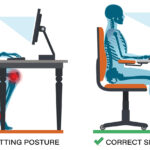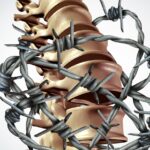Cognitive functional therapy led to ‘large and sustained’ clinical improvements in pain patients.
People with chronic low back pain experienced “large and sustained” clinical improvements thanks to a new Australian therapy.
Cognitive functional therapy targets both physical and psychological factors contributing to pain and disability, in line with guidelines, and helps patients better understand their pain. Australian experts have called this and similar interventions a “paradigm shift” in how we will treat back pain.
The randomised, controlled trial of almost 500 adults with chronic low back pain found that those receiving cognitive functional therapy reported significantly reduced activity limitation at 13 weeks compared to those who received usual care.
The intervention focuses on teaching people to move in ways that minimised their pain, as well as helping them become more confident in activities they were avoiding for the fear of causing pain.
For example, one patient focused on sitting to standing movements, while another focusing on walking, jump squats and deadlifts.
The intervention group, who received a median of seven cognitive functional therapy sessions over a 12-week period, also scored an average of 4.6 points lower on the Roland Morris Disability Questionnaire (where scores range from 0 to 24 and higher scores equals greater disability).
The effects were sustained a year later, with one booster session offered at the 6-month mark, the authors wrote in The Lancet.
“This is a great trial that fits beautifully into a new, developing field of research that will change people’s lives and represents a paradigm shift in how we will treat back pain over the next five to 10 years – getting people to change the way they think about themselves and their pain,” said Professor James McAuley, director of the Centre for Pain IMPACT at NeuRA, who was not involved with the research.
Another arm of the trial involved those who received cognitive functional therapy as well as having access to data collected by movement sensors placed on their lumbar spine. The data, which was also shared with the treating physiotherapists, could be used for individualised movement retraining and for biofeedback purposes.
This combined intervention group also scored an average of 4.6 points lower on the disability scale compared to the usual care group, suggesting that adding a biofeedback sensor did little to improve the therapy.
“The clinical effectiveness of our two intervention groups was larger than most interventions for chronic low back pain for the outcomes of activity limitation and pain, and similar to those previously reported for the most effective combination therapies,” the researchers wrote.
In addition to the clinical benefits, cognitive functional therapy was more cost-effective than usual care in terms of quality-adjusted life-years (meaning patients had extra months or years of life at a reasonable quality because of the treatment) as well as societal costs (direct and indirect health costs and productivity losses), the researchers found.
“This finding is noteworthy because the largest low back pain costs are due to productivity losses rather than direct health costs,” the researchers wrote.
Similar benefits were seen for secondary clinical outcomes, including improvements in physical functioning and pain self-efficacy, as well as reductions in pain catastrophising and the fear of movement.
“There are few, if any, treatments [for chronic low back pain] that have maintained their effects in the long term,” said Professor Chris Maher, founding director of the Institute for Musculoskeletal Health at the University of Sydney.
Physiotherapists in Perth and Sydney trained to deliver the intervention completed 80 hours of clinical workshops (including lectures, patient demonstrations, and mentoring with the instructional team).
Professor Maher praised the quality of the trial, but highlighted the challenges in establishing adequate funding to get these patients access to the treatment.
“We have the unfortunate situation in Australia where the PBS and MBS will fund ineffective and harmful treatments, but not this safe, cost-effective treatment,” he told The Medical Republic.
“How do we redirect government funding away from low value care into high value care for low back pain? That’s the conversation we need to be having.”






